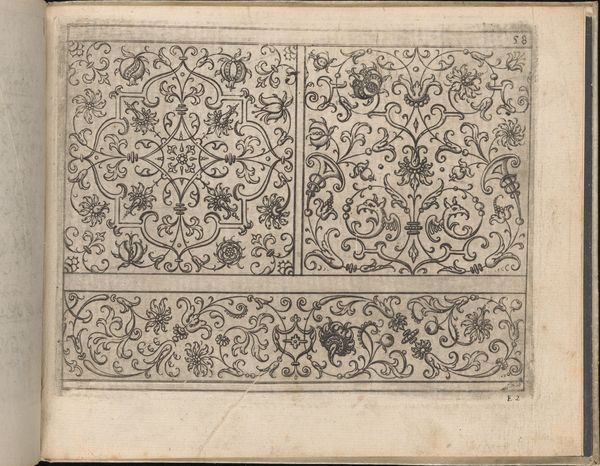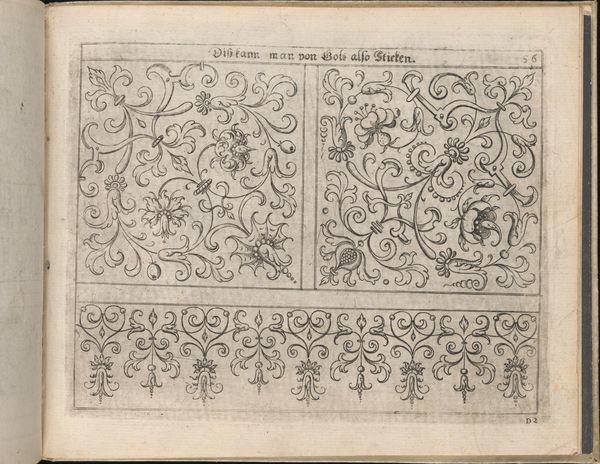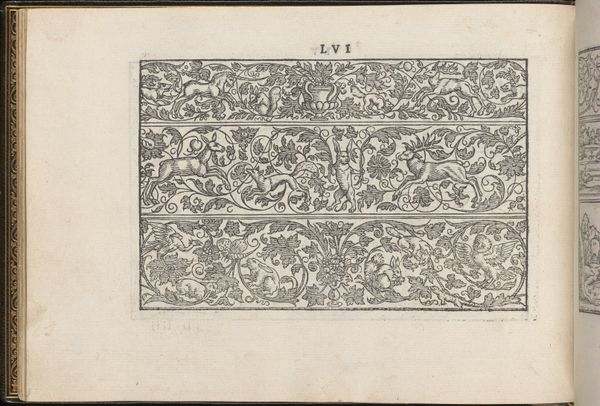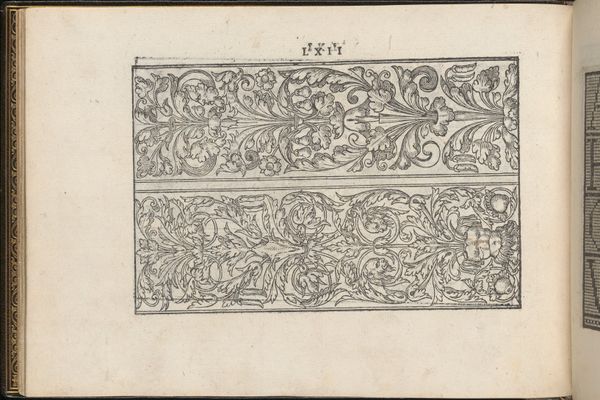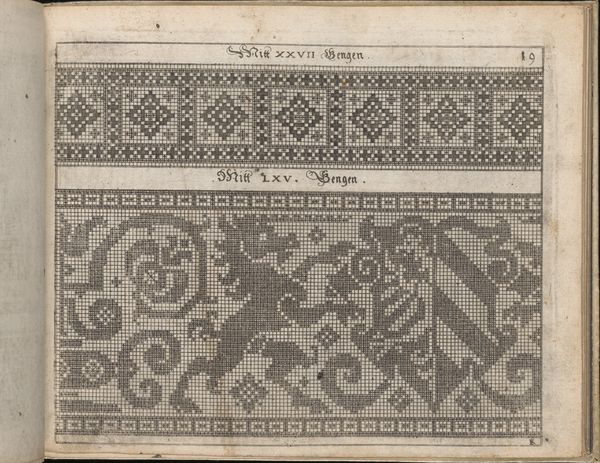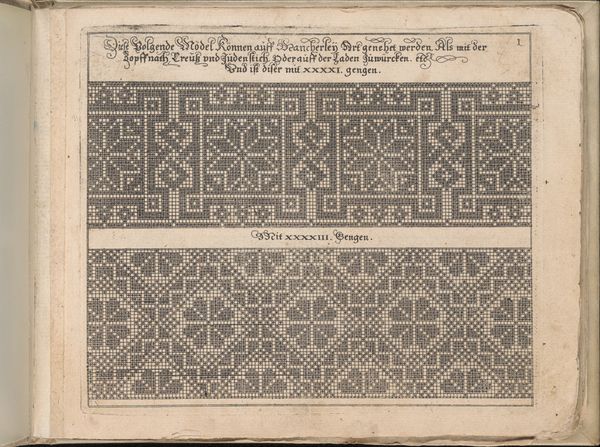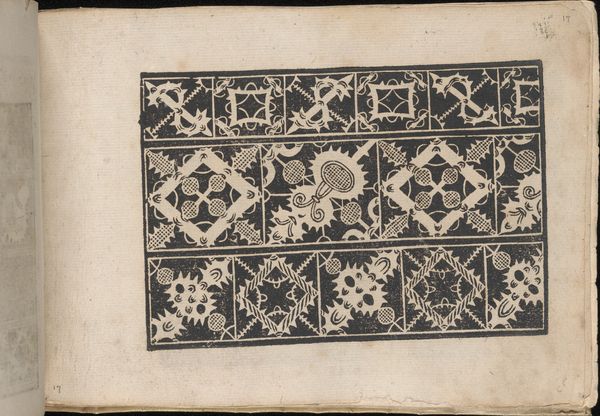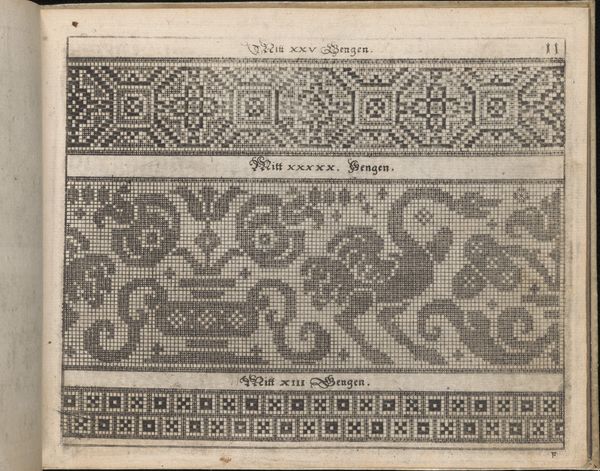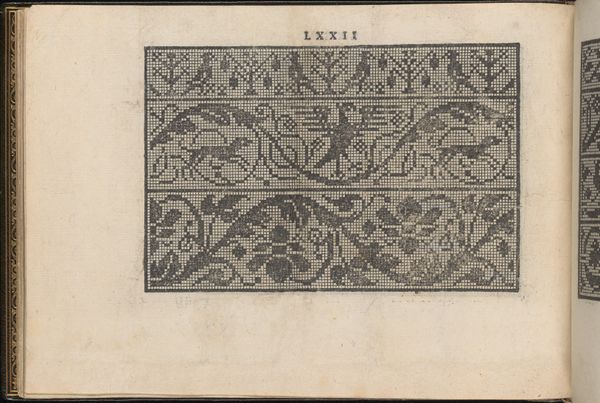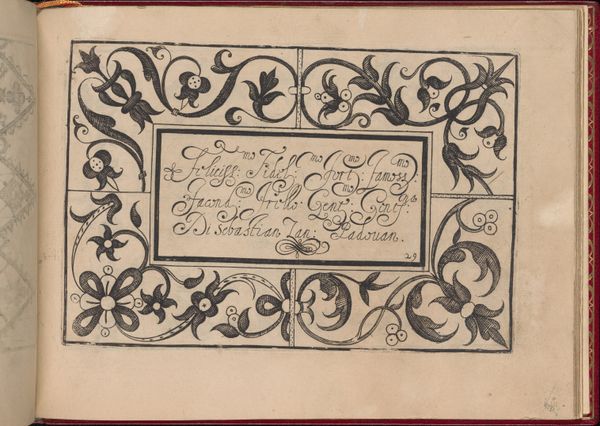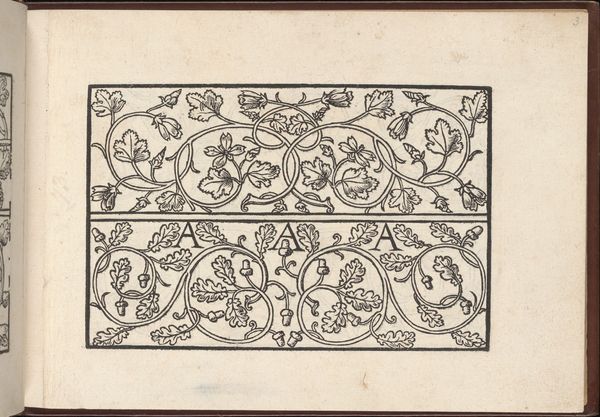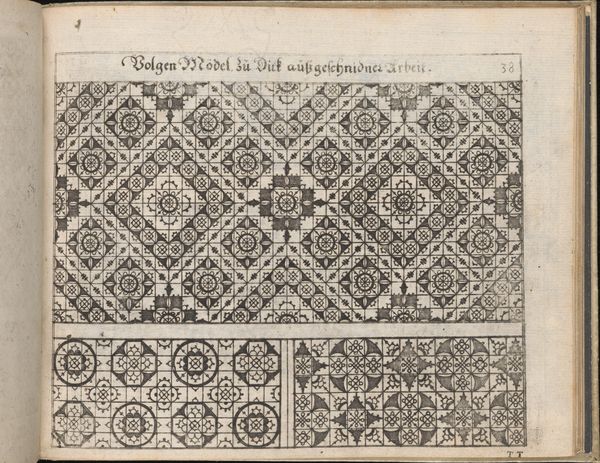
drawing, graphic-art, print, ink, engraving
#
drawing
#
graphic-art
#
ink paper printed
# print
#
ink
#
geometric
#
decorative-art
#
engraving
Dimensions: Overall: 5 11/16 x 7 1/16 x 3/4 in. (14.5 x 18 x 1.9 cm)
Copyright: Public Domain
Curator: Looking at this page from Johann Sibmacher’s "Newes Modelbuch in Kupffer," dating back to 1604, it is a delicate example of engraving showcasing ornamental designs rendered in ink on paper. The book, of which this is plate 65r, is housed here at the Metropolitan Museum of Art. Editor: The patterns! It evokes a feeling of Renaissance opulence but distilled into something linear and restrained. There's a controlled energy in the symmetry and the delicate flourishes. Curator: Absolutely. Sibmacher was a significant figure in the history of pattern books. These weren’t conceived as autonomous artworks, but rather served as vital resources for artisans—weavers, embroiderers, and goldsmiths—providing designs they could adapt and incorporate into their own crafts. They played a role in standardizing style across Europe at the time. Editor: It is interesting you point out artisans borrowing from such pattern books! I'm struck by the repeated motifs; scrolling vines, stylized flowers, and almost heraldic elements, all intertwining. Do you think these botanical elements hold symbolic meaning tied to courtly life? Curator: Perhaps indirectly. The presence of specific flowers wasn't necessarily about singular coded meanings. Instead, they represented an elevated artistic aesthetic reflecting the tastes of the aristocracy that supported the arts and industry at the time. There was also burgeoning interest in botany! The printing of these patterns themselves made this sophisticated design accessible and therefore influential. Editor: It is such an interesting juxtaposition of what seems organic against clear geometric constraints, though! And look closely at how the composition invites interpretation. Is that some kind of crest? This reminds us of cultural continuity, how certain images and forms continue to resonate through various periods. Curator: Precisely. The legacy of pattern books lies in their democratizing force in making design pervasive, in laying a template, if you will. And as you rightly observe, these very patterns take their inspiration from broader cultural movements. The ripple effects are endlessly fascinating! Editor: Well, for me, I'm reminded that ornamentation does far more than simply adorn. It offers tangible links to collective identities, aspirations, and dreams that continue to be re-imagined today. Curator: I agree wholeheartedly! Examining an engraving like this pulls us into the matrix of cultural exchange in the early 17th century. And with that, it provides insight into how tastes and artistic movements come into formation.
Comments
No comments
Be the first to comment and join the conversation on the ultimate creative platform.
